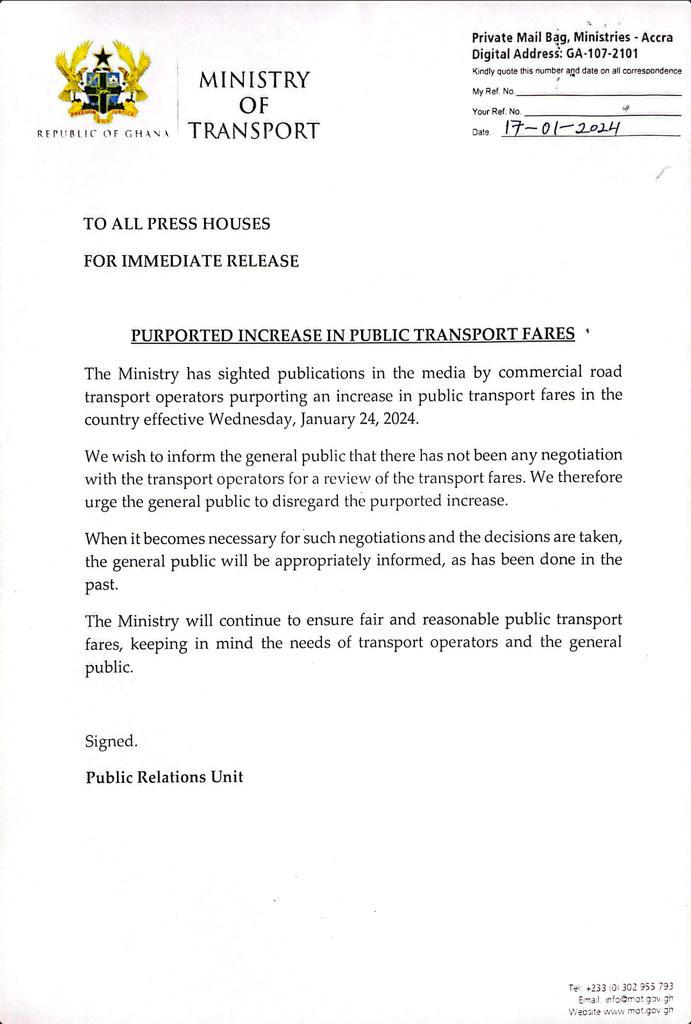
I write to bring to light the dangers of some activities in the transport sector. This was an observation from my everyday use of the popular transport system known as 'trotro'. I share the sentiments of many if I say using trotro can be a stress factor or releaser due to some conversations (which is loud enough to even attract the attention of passengers in another bus) and happenings in the bus and on the road.
One such situation, which has gone unnoticed, is transporting gas cylinder by trotros especially or taxis and private cars.
It is common to see an individual carry a cylinder filled with Liquefied or Liquid Petroleum Gas (LPG) and comfortably board trotro, oblivious to the danger it poses to himself/herself, passengers and other road users.
Driving can be hazardous at the best of times, but the safe carriage of dangerous goods requires compliance with complex regulations, an absolute commitment to best practice and extra levels of driver training and skills.
Any goods that pose a risk to people, property and the environment are classified as dangerous goods. When transported, these goods need to be packaged correctly to ensure that they are carried safely. Gases are classified as dangerous goods.
The transportation of dangerous goods is regulated in order to prevent, as far as possible, accidents involving people or property, damage to the environment, to the means of transport employed or to the goods transported. Some of the hazards are;
impact from the blast of a gas cylinder explosion or rapid release of compressed gas
impact from parts of gas cylinders or valves that fail
contact with released gas or fluid
fire resulting from the escape of flammable gases
impact from falling cylinder
manual handling injuries
If you were to be in a trotro with a person carrying a gas cylinder, can you imagine what will happen if a driver swerves a vehicle and slams into a tree? Can you imagine what will happen if the driver speedily negotiates a sharp curve where passengers collide into each other, or he/she drives fast on a road of rumps, causing the up and down movement which will make the cylinder shake?
I hate to continue.
It unnerves me anytime a passenger with such item joins a bus. I wait, prayerfully, for the person to alight (knowing very well my fate if I dared speak in their presence) and sensitize the driver and his assistant. Or, like I mostly do, I alight and join another bus.
This is not because I wish the previous bus ill luck, but because of how reckless some drivers can be and also because we never know what lies ahead of us. The emphasis is on accident and injury resulting from occupational risks in the transport sector that should have been prevented or controlled, not road accidents of a general nature.
It is recommended that gas cylinders are transported in open vehicles or open containers. If it is necessary to transport a cylinder inside, cylinder must be loaded into an upright position with the valve at the top and secured to prevent movement. All windows or vents should be open. Do well to remove/avoid substances that may react to gas. Once the journey is completed, gas cylinders should be removed from the vehicle. In case of damage of cylinder, do not use a screwdriver but seek appropriate help, keeping other road safety measures in mind.
It is not only the duty of government or private bodies or drivers to ensure safety on our roads. All road users carry a responsibility for road safety, and good driving and pedestrian habits are essential. We can help to prevent the unnecessary loss of lives on our roads if we all work together and show consideration and respect for fellow road users.
Doris Morton works with McOttley Holdings, Dzorwulu - Accra.
Read Full Story





















Facebook
Twitter
Pinterest
Instagram
Google+
YouTube
LinkedIn
RSS